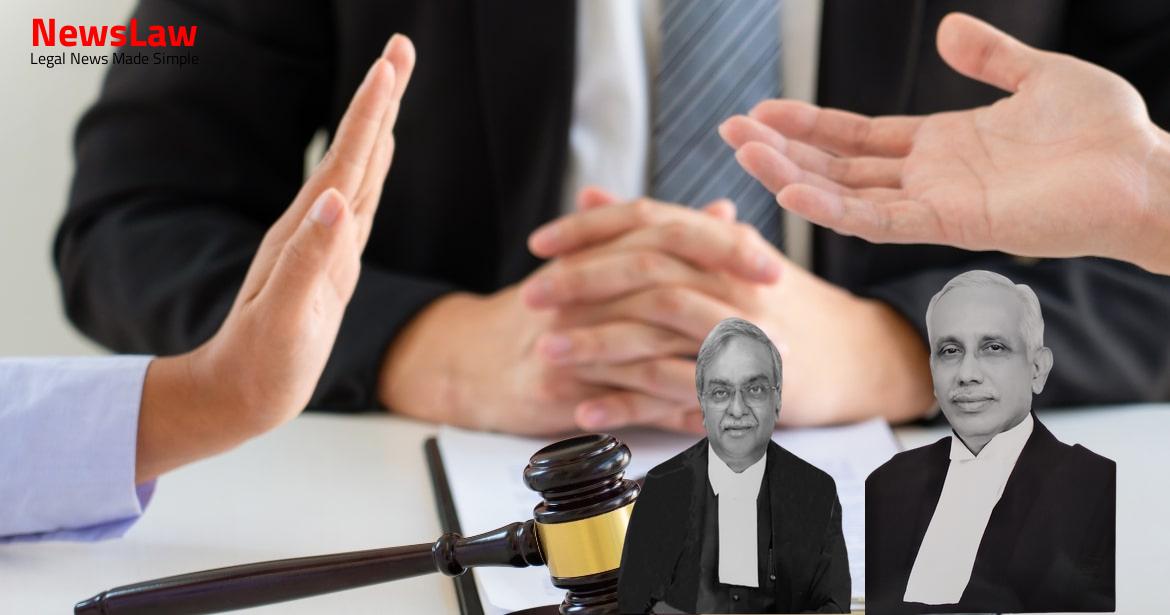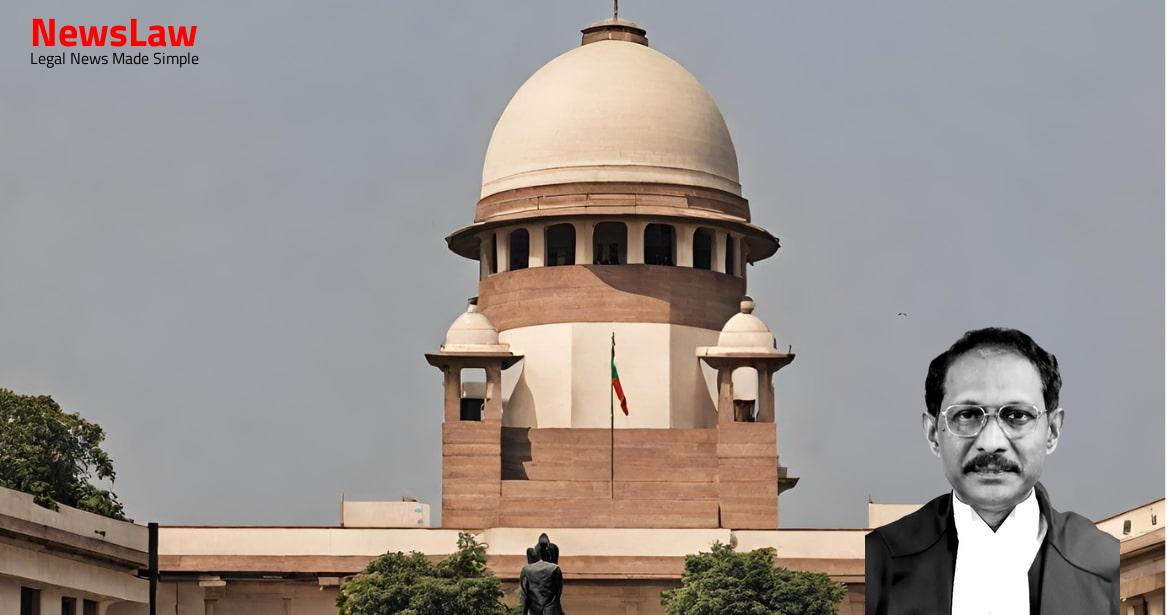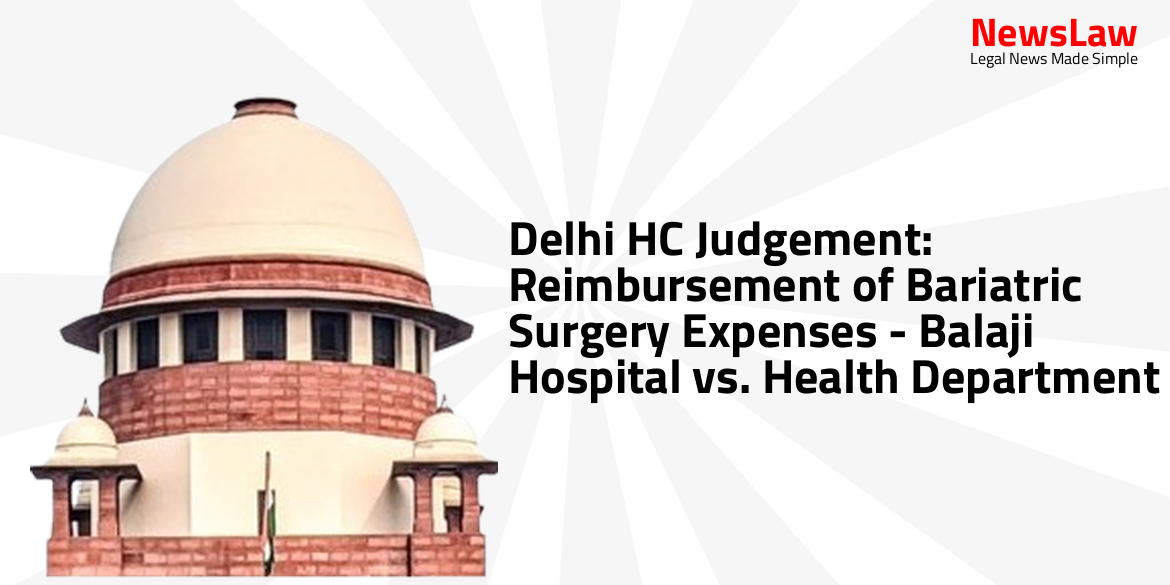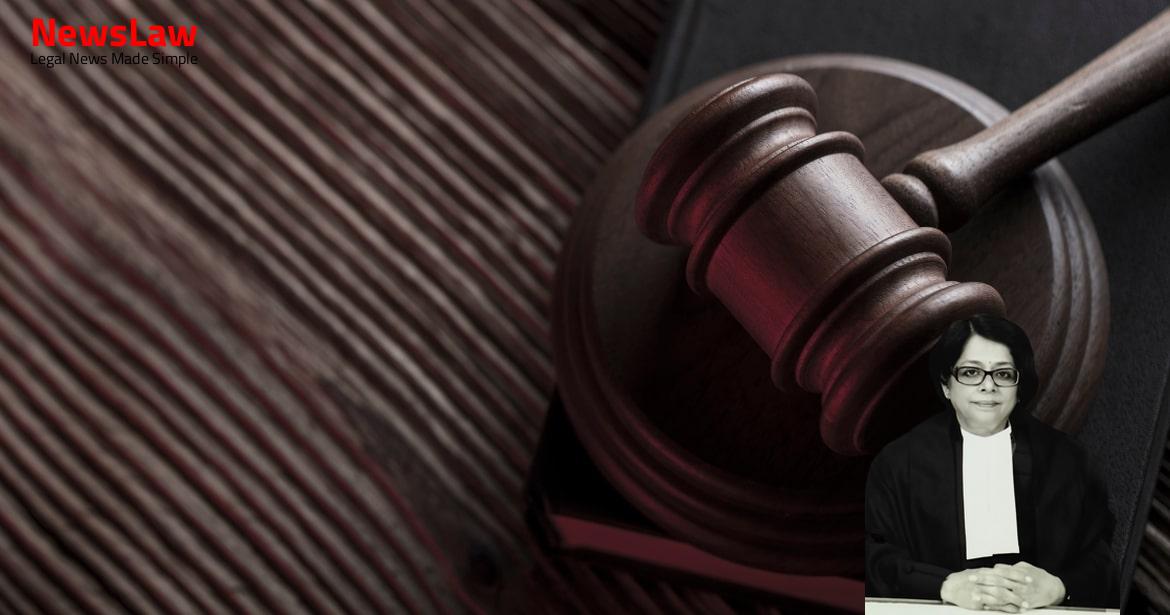Delve into the legal implications of long-term cohabitation and the presumption of marriage as analyzed by the court. Understanding the significance of establishing marital rights based on evidence of continuous partnership. The blog highlights the court’s emphasis on the process of obtaining a final decree in cases involving property rights. Stay informed on the nuances of marriage presumption in legal proceedings.
Facts
- Plaintiffs claimed half share in the suit schedule property based on their relationship with Damodaran and Chiruthakutty.
- Defendants did not plead or contend that plaintiffs were entitled to any share as per their relationship with Damodaran and Chiruthakutty.
- Marriage between Damodaran and Chiruthakutty is crucial for plaintiffs to claim rights over the property.
- Achuthan, predecessor of defendants, had a son named Karunakaran.
- Trial Court passed a preliminary decree for partition, allotting a share to the plaintiffs.
- Defendants contested the legitimacy of the first plaintiff’s birth and denied the marriage of Damodaran and Chiruthakutty.
- Appeals were filed by defendants against the Trial Court’s decree for partition, which were allowed by the High Court.
- First plaintiff claimed to be the son of Damodaran and Chiruthakutty, while the second plaintiff claimed to be the son of the first plaintiff.
- Multiple bachelors among the children of Vaidyar, with Karunakaran being the only son of Achuthan.
- High Court’s judgment setting aside the Trial Court’s decree is being challenged in these appeals.
- The High Court found that the first plaintiff was the son of Damodaran based on the evidence.
- However, there was no evidence to prove that Damodaran had a valid marriage with Chiruthakutty.
- As a result, the plaintiffs were not entitled to a share in the coparcenary property.
- The High Court considered the first plaintiff to be illegitimate.
- The matter was remitted back to the Trial Court for fresh consideration on the factum of marriage.
- The appeals were allowed by this Court, setting aside the order of remand, and directing the High Court to decide based on the evidence on record.
- The High Court, on re-examination, found no evidence of long co-habitation between Damodaran and Chiruthakutty to prove a valid marriage.
- The Trial Court, however, concluded that Damodaran had married Chiruthakutty based on evidence of long co-habitation, and the first plaintiff was their son.
Also Read: Navigating Legal Challenges: Court’s Analysis on Limitation Act in IBC Proceedings
Arguments
- Documents produced by the plaintiffs show that Damodaran was the father of the first plaintiff and Chiruthakutty was his wife, even though there is no direct evidence of their marriage due to its age.
- The documents presented by the plaintiffs predate the disputes between the parties and establish the lineage of the first plaintiff.
- Evidence and documents indicate that periodical payments were made to Chiruthakutty from Damodaran’s house, supporting the claim of their marriage.
- In cases of long-term cohabitation, a presumption of marriage and legitimacy of children is recognized under the law.
- The defendants failed to provide substantial evidence to refute the presumption of legitimacy in this case, as required under Section 114 of the Indian Evidence Act, 1872.
- Defendants argue that Damodaran did not marry Chiruthakutty and the first plaintiff was not his legitimate son.
- Defendants request the court to not be lenient towards the plaintiffs and pray for the dismissal of the appeals.
- Defendants claim that the suit was filed at a late stage when conclusive evidence could not be produced.
- Defendants assert that there is no proof of marriage or long co-habitation, except for Exhibit A-3.
- Defendants argue that all documents relied upon by the plaintiffs were created after Damodaran’s death.
- Defendants contend that the plaintiffs have not approached the court with clean hands.
Also Read: Legal Analysis on Tariff Determination and Discoms’ Obligations
Analysis
- The documents presented by the plaintiffs, such as the birth certificate and marriage certificate, support their case of the relationship between Damodaran and Chiruthakutty.
- The evidence from witnesses and documents indicates a long duration of cohabitation between Damodaran and Chiruthakutty as husband and wife.
- The presumption of wedlock between a man and a woman living together for a long period as husband and wife, unless rebutted, holds legal weight.
- The defendants have not provided sufficient evidence to counter the presumption of the marriage between Damodaran and Chiruthakutty.
- The court emphasizes on the need for a continuous process in suits from initiation to securing actual relief, suggesting reforms to the current system involving preliminary decrees, final decrees, and execution proceedings.
- The delay in finalizing decrees under Rule 18 of Order XX of the Code of Civil Procedure is highlighted as a concerning trend that impedes the realization of relief for litigants.
- The importance of final decree proceedings and execution proceedings is underlined, urging courts and lawyers to prioritize securing relief for the litigants over mere disposal of suits.
- The law presumes in favor of marriage and against concubinage when a man and a woman cohabit continuously for a number of years.
- A presumption of legality of marriage arises if a man and woman live together as husband and wife for long years, but this presumption is rebuttable.
- This presumption has been supported by various court cases such as Andrahennedige Dinohamy v. Wijetunge Liyanapatabendige Balahamy, Mohabbat Ali Khan v. Mohd. Ibrahim Khan, S.P.S. Balasubramanyam v. Suruttayan, Tulsa v. Durghatiya, Challamma v. Tilaga, Madan Mohan Singh v. Rajni Kant, and Indra Sarma v. V.K.V. Sarma.
- In the absence of direct evidence of marriage, a strong presumption still arises in favor of wedlock when partners have lived together as husband and wife for an extended period.
- Mere passing of a preliminary decree in a suit does not indicate the disposal of the suit.
- The decree in a suit for partition of property or separate possession of a share should declare the rights of the parties involved.
- If the decree pertains to property assessed for revenue, the partition must be carried out by the Collector or a designated subordinate.
- For immovable or movable property not assessed for revenue, the Court may order further inquiry if partition cannot be conveniently made.
- A decree is a formal expression of an adjudication that conclusively determines the rights of the parties in the suit.
- A decree can be preliminary or final, inclusive of rejection of a plaint and determination of certain questions.
- An appeal lies from a decree, but not from certain adjudications or orders of dismissal for default.
- A preliminary decree declares the rights of the parties and provides directions for further proceedings to completely dispose of the suit.
- The Code of Civil Procedure should ensure a smooth and uninterrupted process from suit filing to obtaining relief.
- Once a preliminary decree is issued by the Trial Court, the court should automatically proceed with the case for final decree without delay.
- Avoidance of assigning separate numbers for final decree proceedings to streamline the process.
Decision
- Trial Courts directed to list the matter for taking steps under Order XX Rule 18 of the CPC after passing the preliminary decree for partition and separate possession of the property.
- Registry of the Court to send a copy of the judgment to the Registrar Generals of all High Courts for circulation to concerned Trial Courts.
- Court emphasizes on not adjourning the matter sine die after passing the preliminary decree.
- Judgment of the High Court is set aside, and the judgment and decree of the Trial Court are restored.
- Parties directed to bear their respective costs.
- Concerned party allowed to file an appropriate application for drawing up the final decree in the same suit.
- Emphasis on the importance of drawing up a final decree to conclude the suit.
- Avoidance of issuing fresh notices to defendants at each stage and filing separate final decree proceedings.
Case Title: KATTUKANDI EDATHIL KRISHNAN Vs. KATTUKANDI EDATHIL VALSAN (2022 INSC 643)
Case Number: C.A. No.-006406-006407 / 2010



